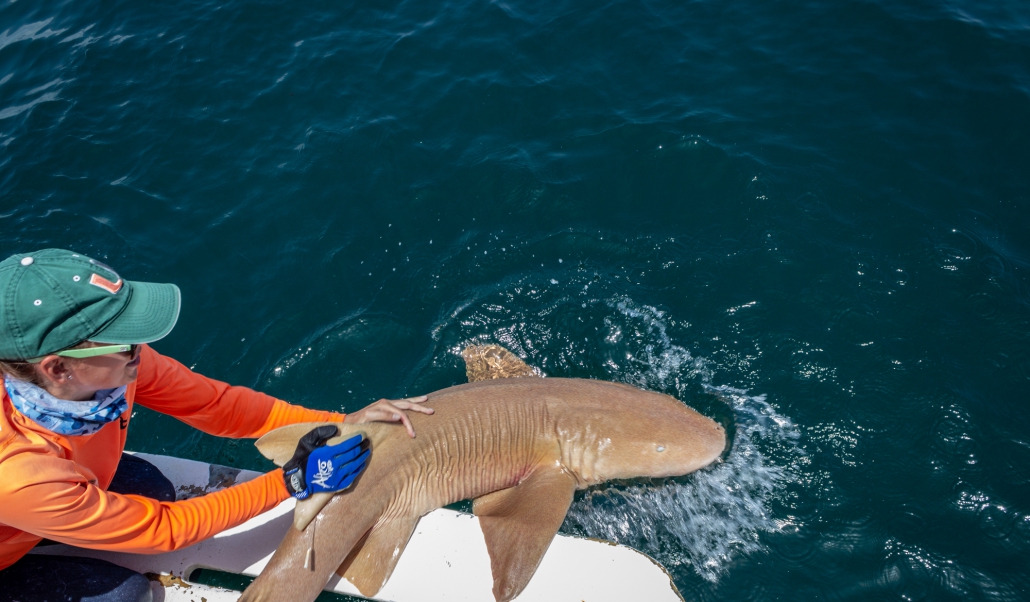Overview
Climate change is having, and will continue to have, an enormously varied set of impacts on the world’s oceans. Overall, we can expect several key changes on the oceans (from IPCC 2013) which include:
Research is showing implications of these changes for wildlife and ecosystems, but this work is particularly challenging for highly mobile marine animals, such as sharks. Most sharks’ body temperature follows that of the environment – unlike mammals (and some partially endothermic sharks), they are ectothermic and cannot generate their own body heat. Sharks, like other animals, have an ideal range for temperature, above or below which they are not able to perform basic functions optimally. We can measure shark responses to temperature ranges in controlled lab setting very precisely. For larger marine animals, such as large coastal sharks, which cannot be maintained in the lab, studying climate change impacts presents several logistical challenges. However, new techniques provide ways of approximating such relationships in the field. Here at SRC, we are conducting a series of research projects to begin exploring some of the impacts climate variability is having on sharks. Some of the primary projects we are conducting include:
Study Highlight
Ocean warming alters the distributional range, migratory timing, and spatial protections of an apex predator, the tiger shark (Galeocerdo cuvier).
In a collaborative study, the SRC team used multiple approaches to evaluate the effects of ocean warming on tiger shark movements in the Western North Atlantic. This research found that over the past ~40 years, shark distributions have expanded northward, paralleling rising temperatures. Moreover, satellite tracking of sharks over the past decade has revealed their annual migrations have extended farther poleward and arrival times to northern areas have also occurred earlier in the year during warm periods, which has subsequently decreased their spatial overlap with time/area closures which may protect them from fisheries interactions. Potential consequences of these climate-driven alterations include increasing shark vulnerability to fishing, disruption of predator-prey interactions and changes in encounter rates with human water-users.
Figure: A year-long migration of a female tiger shark beginning in the Bahamas, travelling as far north as the state of Massachusetts. Point colors show water temperature sensed by the shark-borne satellite tag.(Figure via Rachel Skubel)
SRC In Focus
Scientific Publication:
Hammerschlag N, McDonnell LH, Rider MJ, Street GM, Hazen EL, Natanson LJ, McCandless CT, Boudreau MR, Gallagher A J, Pinsky ML, Kirtman B (2022). Ocean warming alters the distributional range, migratory timing, and spatial protections of an apex predator, the tiger shark (Galeocerdo cuvier). Global Change Biology, 00, 1–16.https://doi.org/10.1111/gcb.16045
Gutowsky LF, Rider M, Roemer RP, Gallagher AJ, Heithaus MR, Cooke SJ, Hammerschlag N. (2021) Large sharks exhibit varying behavioral responses to major hurricanes. Estuarine, Coastal and Shelf Science. https://doi.org/10.1016/j.ecss.2021.107373
Skubel RA, Kirtman BP, Fallows C, Hammerschlag N (2018) Patterns of long-term climate variability and predation rates by a marine apex predator, the white shark Carcharodon carcharias. Marine Ecology Progress Series 587:129-139.



